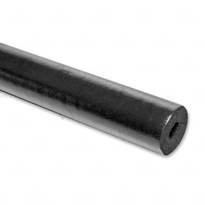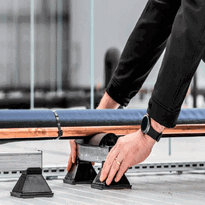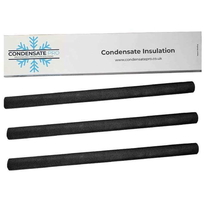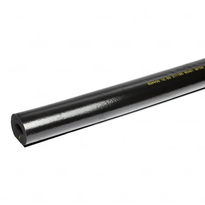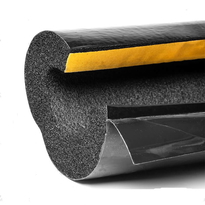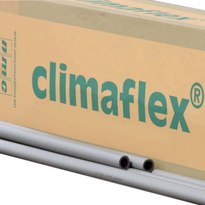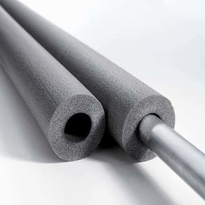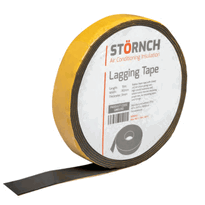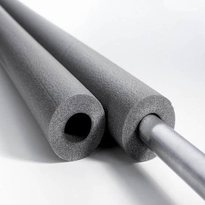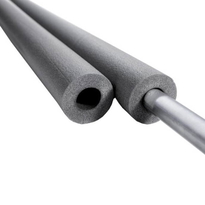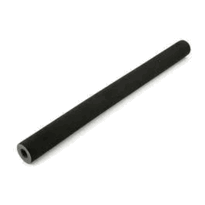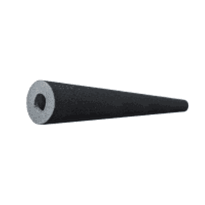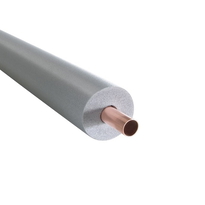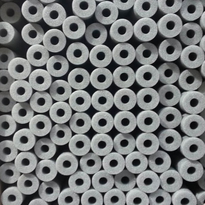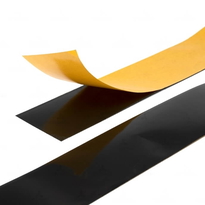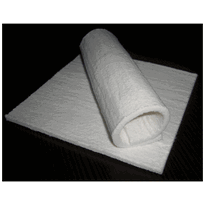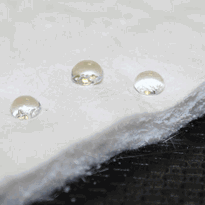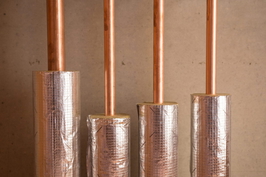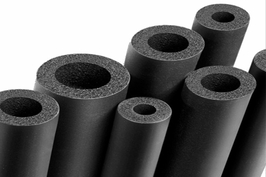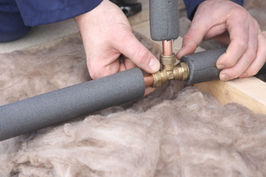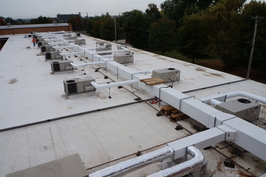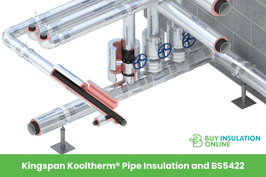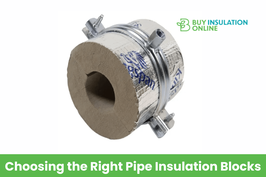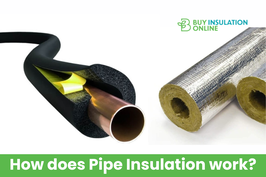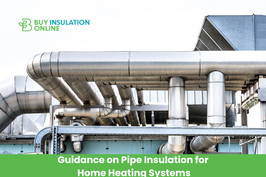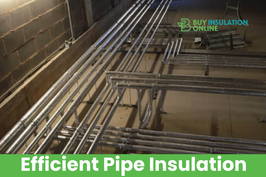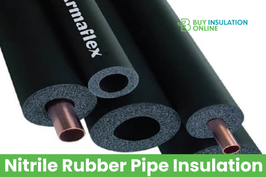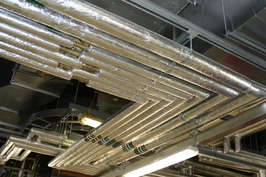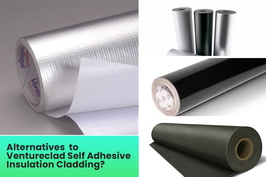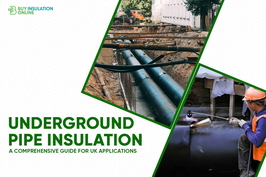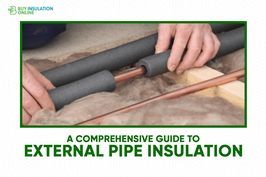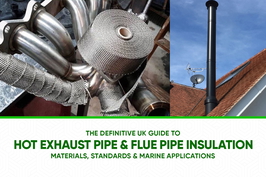External Pipe Lagging
External pipe lagging involves wrapping pipes with insulation materials such as fibreglass, mineral wool, or foam to maintain temperature, reduce noise, and prevent damage. The addition of metal cladding enhances durability, improves fire resistance, and provides a polished appearance, shielding pipes from impacts and environmental factors.
Proper installation is essential and includes thorough surface preparation, sealing gaps effectively, and securing materials firmly. Regular maintenance is crucial for ensuring longevity, while challenges such as condensation and uneven surfaces can be effectively managed through best practices.
By exploring these details, one can optimise strategies for pipe protection, ensuring that systems remain efficient and well-maintained.
Overview of External Pipe Lagging Materials
External pipe lagging materials are crucial for insulating pipes and safeguarding them from temperature fluctuations, noise, and potential damage. Fibreglass pipe lagging is composed of fine glass fibres bonded with adhesive and is available in various forms such as rigid boards, blankets, or preformed sections. This type of lagging offers effective insulation, noise reduction, and fire resistance at a competitive price, making it ideal for residential, commercial, and industrial applications. Fibreglass insulation has low thermal conductivity, which helps in reducing heat transfer. Mineral wool lagging, crafted from molten slag or natural rocks spun into fibres, provides excellent fire resistance and durability, particularly in demanding environments. Elastomeric foam, a flexible, rubber-like material, is highly resistant to moisture and can easily conform to complex pipe shapes. It's commonly utilised in refrigeration and HVAC systems. Phenolic foam and calcium silicate laggings are more specialised options. Phenolic foam is known for its high insulation efficiency, while calcium silicate is specifically designed for high-temperature industrial piping.
Advantages of Using Metal Cladding Over Pipe Insulation
Metal cladding offers enhanced durability and protection for pipes when compared to conventional insulation materials. It effectively resists impacts, wear, and challenging environmental conditions, ensuring longevity and reliability. Cladding refers to the external skin of a set-up, specifically designed to protect insulated pipework. Furthermore, metal cladding exhibits superior fire resistance, which significantly lowers fire hazards and aids in adhering to safety regulations. In addition to its protective benefits, metal cladding enhances the aesthetic appeal of pipework, providing a sleek and polished finish. This not only improves the overall look but also simplifies maintenance, making it easier to inspect and service the pipes as needed. Ultimately, the advantages of metal cladding make it a preferred choice for those seeking robust, safe, and visually pleasing solutions for pipe insulation.
Enhanced Durability and Protection
Protecting pipe insulation from physical damage is vital for ensuring long-term performance, and metal cladding provides a robust layer of defence. Materials such as aluminium or stainless steel shield insulation from impacts, abrasion, and tearing, preventing damage that could compromise effectiveness. Metal cladding also offers excellent resistance to extreme weather conditions, ensuring the insulation remains protected in diverse environments. Hemmed edges on the cladding help avoid injuries during handling and enhance the material's resistance to rips. This cladding also maintains the insulation's shape, preventing deformation from external forces. Metal cladding serves as a barrier against vandalism, pests, and accidental strikes, thereby extending the system's lifespan. Furthermore, it safeguards against moisture and water intrusion, which can lead to corrosion and mould growth.
Superior Fire Resistance Capabilities
The fire resistance properties of metal cladding provide a significant advantage over traditional pipe insulation materials. Metals such as aluminium form a protective oxide layer when exposed to heat, acting as a heat shield that contains flames and limits the spread of fire. The oxide layer enhances the metal's durability under high temperatures, adding an additional layer of fire protection. Unlike many insulation materials, metal cladding is non-combustible, meaning it doesn't burn or release toxic fumes, which enhances safety for all individuals nearby. Its high melting point ensures that it can withstand elevated temperatures for longer periods, providing improved fire endurance. Furthermore, metal coverings prevent direct contact between flames and the combustible insulation beneath, serving as a physical barrier that reduces the spread of fire along pipes and confines heat. These features contribute to better compliance with fire safety standards and building regulations, ultimately helping to protect both property and lives in the event of a fire.
Improved Aesthetic Appearance
Utilising metal cladding on pipes significantly enhances their overall aesthetic by providing a clean and professional appearance. It conceals insulation materials and creates a uniform, tidy surface, making the pipework appear well-maintained and organised.
In commercial and public spaces where pipes are visible, this improvement contributes to a polished environment.
Metal cladding offers a smooth, sleek finish that elevates the perceived quality of the installation. It effectively hides any imperfections or irregularities in the pipe insulation, resulting in a cleaner and more refined look.
Furthermore, the variety of metal options, finishes, and colours allows for customisation to align with architectural styles or branding.
Ultimately, metal cladding plays a crucial role in creating a more appealing space, fostering a sense of belonging and pride in the environment.
Types of Finishes for External Pipe Lagging
Different finishes for external pipe lagging serve various purposes, enhancing durability and providing weather resistance.
Steel lagging is prevalent for heavy-duty protection, as it's resistant to impacts and vandalism. Often galvanised or made from stainless steel, it effectively prevents rust.
Aluminium lagging offers a lightweight alternative with excellent corrosion resistance, making it suitable for outdoor pipes while adding a shiny, attractive appearance.
PVC or plastic coatings are waterproof and UV resistant, making them ideal for wet environments or harsh conditions.
Cladding jackets are removable, allowing for easy access during maintenance, and are primarily used in industrial settings.
Composite finishes combine materials such as plastic and metal to create extra moisture barriers and enhance UV protection, ensuring long-term performance.
These finishes are designed to meet different needs and outdoor challenges, providing pipes with both functionality and style. Proper maintenance can further extend the lifespan of these finishes, ensuring continued protection against environmental elements.
Key Factors to Consider When Choosing External Pipe Lagging
Choosing the right external pipe lagging necessitates careful consideration of several key factors to ensure optimal performance and durability. The following aspects are essential:
Insulation Thickness
It is important to balance cost, practicality, and thermal requirements to effectively prevent heat loss, freezing, or overheating.
Weather Resistance
Select materials that can endure various climatic conditions, including rain, UV rays, and wind, to ensure long-lasting protection for your pipes.
Material Compatibility
Ensure that the insulation is compatible with the pipe material to avoid any potential chemical reactions and to maximise thermal efficiency.
Installation and Maintenance
Opt for flexible, easy-to-install insulation that allows for convenient access during inspections and repairs.
Installation Processes for External Pipe Cladding
Installing external pipe cladding necessitates thorough preparation, which includes cleaning and inspecting the pipe surface to ensure optimal adhesion.
Once the surface is adequately prepared, the cladding is shaped and securely affixed to accommodate fittings and irregularities. Finally, joints must be sealed with suitable materials to prevent water ingress and guarantee a durable finish.
Attention to detail during the installation process is crucial. Properly fitted cladding not only improves the aesthetic appeal but also enhances insulation and protection against environmental factors.
It's essential to select high-quality materials that are specifically designed for external use. Regular maintenance checks should be conducted to ensure the longevity of the cladding installation, as this can help identify any potential issues before they escalate.
Surface Preparation Techniques
Before applying external pipe lagging, it's crucial to adequately prepare the pipe surface to ensure a secure and durable installation. Proper surface preparation enhances adhesion and mitigates issues such as rust or moisture accumulation. External pipe insulation protects pipes located outside or in unheated areas.
Key steps include:
Cleaning: Thoroughly remove dirt, grease, and debris using methods like wire brushing or solvent wiping to achieve a pristine surface.
Drying: Ensure the pipe is completely dry, utilising air blowers or allowing it to air dry, to prevent moisture-related problems such as corrosion.
Profiling: Roughen smooth surfaces with abrasive tools or chemical etching to enhance the adhesion of the coating.
Inspection: Examine the surface for any leaks, corrosion, or remnants of old coatings, confirming it's ready for lagging.
These steps create a solid foundation for long-lasting and effective pipe insulation.
Securing Metal Cladding
Securing metal cladding to pipes involves a meticulous process that ensures the protective layer remains in place over time. Appropriate fasteners, such as stainless steel screws or rivets, are crucial due to their resistance to corrosion and ability to cope with environmental stresses. Fasteners like #8 x ½” screws are frequently employed, particularly around valves, nozzles, and other vulnerable areas. Cladding pieces are precisely cut and shaped to accommodate pipes of various sizes and configurations, with overlaps designed to effectively shed water. During installation, the cladding is securely positioned over insulation, often incorporating additional vapour barriers. Careful placement of joints and overlaps prevents gaps and water ingress, while adequate spacing of fasteners ensures the cladding remains robust without sustaining damage. This considered approach is vital for maintaining the pipe’s protection and insulation over time. Properly installed cladding is essential for maintaining the pipe’s integrity and resisting environmental factors that cause degradation.
Sealing and Finishing
Sealing and finishing external pipe lagging are vital processes to ensure the insulation remains weatherproof and durable over time. Proper sealing prevents moisture from entering and helps maintain thermal efficiency. To achieve this, consider the following key points: Use suitable adhesive or double-sided tape along the pre-cut slit to seal foam insulation seams, creating a continuous protective layer. Wrap duct or insulating tape tightly around joints at bends, tees, and valves to prevent moisture ingress and minimise heat loss. For complex angles such as 90-degree bends, cut insulation at 45° bevels for a snug fit, then seal with tape to fully close the seams. Inspect all surfaces thoroughly, then apply weather-resistant tapes or sealants that can withstand UV exposure and moisture, ensuring long-lasting durability. Using high-quality sealing materials can substantially extend the lifespan of your insulation and improve energy efficiency. These steps are crucial in maintaining the integrity and efficiency of external pipe lagging.
Fire Safety Features in External Pipe Lagging
External pipe lagging incorporates several essential fire safety features designed to minimise the risk of fire spread and protect adjacent areas. Fire-resistant materials such as mineral wool and glass wool are commonly utilised, as they do not burn, shrink, or deteriorate over time. Some insulation products include intumescent technology, which expands when exposed to heat, effectively sealing gaps and slowing the progression of fire.
Insulation types like rigid foam and polyethylene foam require additional fire-resistant coatings to meet safety standards. Fire-rated lagging serves as a thermal barrier, maintaining cooler pipe surfaces and preventing ignition. Proper insulation management plays a critical role in controlling surface temperatures and containing potential fires, thereby providing valuable time for emergency responses.
The following table outlines various fire safety materials and their properties:
Material |
Fire Safety Feature |
| Mineral/Glass Wool | Fire-resistant, does not burn or deteriorate |
| Intumescent Products | Expand to seal gaps during heat exposure |
| Rigid Foam | Requires coatings for fire safety compliance |
| Polyethylene Foam | Needs fire-rated covers for enhanced safety |
Enhancing Energy Efficiency With External Pipe Insulation
External pipe insulation effectively reduces heat loss by trapping thermal energy as hot water flows through pipes. This not only saves energy but also lowers costs for consumers.
The selection of insulating materials plays a crucial role in determining how efficiently heat is retained, with certain materials providing superior performance compared to others.
Moreover, employing proper installation techniques is essential to achieve maximum effectiveness and ensure enduring energy savings. This makes insulation an integral component of successful energy management strategies in the UK.
Thermal Loss Reduction Strategies
Reducing heat loss from pipes is essential for improving energy efficiency in various systems. External pipe lagging is a key strategy to achieve this, with insulation capable of significantly decreasing heat loss. This leads to faster hot water delivery and lower energy expenses.
To maximise benefits, consider the following strategies:
Use weather-resistant insulation materials for enhanced durability.
Seal joints and ends properly to prevent moisture ingress.
Focus on insulating pipes located in colder, unconditioned spaces for greater savings.
Regularly inspect and maintain insulation to prevent damage and ensure ongoing performance.
Implementing these approaches helps retain heat, reduces fuel consumption, and extends the lifespan of associated equipment.
Proper thermal loss reduction not only boosts energy efficiency but also fosters a community committed to sustainable practices.
Material Impact on Efficiency
Choosing the right insulation material can make a significant difference in how effectively pipes retain heat and conserve energy. Materials such as phenolic foam exhibit very low thermal conductivity, making them exceptional at minimising heat loss, even in a slim layer. Techlite 79 Series surpasses traditional options like fibreglass and mineral wool, offering enhanced thermal efficiency and reduced heat escape. Closed-cell foam also boasts moisture resistance, which helps maintain insulation performance over time, particularly in humid environments.
The table below outlines the key differences:
Material |
Key Benefits |
| Phenolic Foam | Low thermal conductivity, fire resistant |
| Fibreglass/Mineral Wool | Suitable for high-temperature use, higher heat transfer |
| Closed-Cell Foam | Moisture resistant, durable |
Selecting optimal materials enhances efficiency, reduces energy costs, and supports environmental sustainability.
Installation Best Practices
Proper installation of external pipe insulation is essential for maximising energy efficiency and preventing heat loss. To achieve the best results, several key steps should be followed.
First, conduct a thorough assessment by carefully measuring pipe lengths, including fittings and bends, while identifying areas prone to condensation or temperature extremes.
Second, ensure that pipes are clean and dry before applying insulation, as this promotes better adhesion.
Third, during installation, it's important to avoid gaps by generously overlapping layers and securing insulation regularly.
Fourth, seal any penetrations with caulk or foam to prevent air leaks.
Additional measures such as moisture barriers, weather-resistant jackets, and appropriate fasteners also enhance durability.
Following these practices helps maintain continuous and effective insulation, ultimately supporting energy savings.
Durability and Maintenance of External Lagging Materials
External lagging materials must endure a variety of environmental conditions over time, impacting their durability and maintenance requirements. Each material presents distinct advantages; for instance, polyethylene foam is resistant to water absorption and chemicals, making it a popular choice for residential applications.
Rubber, known for its exceptional moisture resistance, can last for many years. Fibreglass necessitates regular inspections to avoid moisture absorption, while closed-cell phenolic is recognised for its high durability and fire resistance, although it tends to be on the pricier side.
Materials that are regularly exposed to sunlight require UV protection to prevent degradation.
Maintenance is essential and involves routine inspections for any cracks or damage, light cleaning with non-abrasive tools, and prompt repairs or replacements when necessary.
Opting for durable materials such as rubber or closed-cell foam can significantly reduce long-term costs, ensuring that the lagging remains effective and reliable throughout its lifespan.
Common Challenges and Troubleshooting in External Pipe Cladding
One prevalent challenge associated with external pipe cladding is the management of condensation and moisture accumulation. When the surface of the pipe is colder than the surrounding air, moisture can condense, resulting in drips, dampness, and the potential for mould growth.
This moisture can also inflict damage on nearby materials, such as wood. To mitigate these issues, effective insulation is crucial, as it serves as a thermal barrier, helping to maintain warmer pipe surfaces.
Common problems encountered include:
Irregular pipe surfaces that can lead to water splashes and trapped moisture.
Insufficient sloping of lagging, which allows water to pool and penetrate.
Excessive pressure during installation, which can result in crinkling or damage.
The reuse of materials or inaccurate measurements that create gaps and weak points.
Addressing these challenges is vital for ensuring effective insulation, reducing moisture-related complications, and extending the lifespan of the system.
Innovations and Future Trends in External Pipe Lagging
Advancements in materials and technology are revolutionising the future of external pipe lagging, enhancing its efficiency and durability significantly. Modern innovations feature the use of rigid PVC films, which offer robust insulation resistant to moisture, dust, and impact.
Pre-insulated pipes that integrate insulation with protective jacketing are particularly beneficial in reducing heat loss and improving efficiency, especially in challenging environments such as offshore drilling. The introduction of new pipe coatings and insulated supports further enhances durability while optimising heat transfer.
Advanced thermal insulation materials, including closed-cell foams, are specifically designed to meet diverse thermal requirements, leading to substantial energy savings.
Additionally, the implementation of heat tracing systems combined with insulated pipes ensures stable temperatures, effectively preventing freezing and minimising energy wastage.
These innovations not only enhance performance but also align with evolving regulations focused on reducing energy consumption and greenhouse gas emissions, reflecting a growing commitment to sustainability in the industry.
Conclusion
External pipe lagging plays a vital role in safeguarding pipes against heat loss, corrosion, and potential damage. Selecting the appropriate materials, finishes, and installation techniques is essential for ensuring durability and energy efficiency.
Recent advancements in technology have enhanced these systems, making them more effective and easier to maintain. Proper selection and care of external cladding help guarantee long-lasting performance, contributing to energy savings and minimising maintenance requirements.
Overall, a clear understanding of these factors supports better decision-making for pipe insulation projects, ensuring optimal results for both residential and commercial applications.
